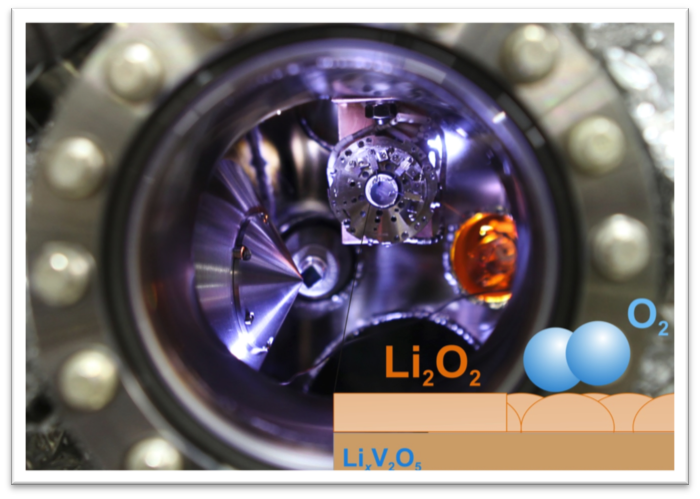The lack
of fundamental understanding of the role of oxygen in non-water based electrolytes
significantly hinders the development of rechargeable lithium-air batteries. This IRG has developed a new X-ray
photoelectron spectroscopy (XPS) technique that makes it possible to
study the lithium/oxygen chemistry occurring during battery operation as a
function of applied voltage and controlled oxygen pressure.
This study provides
the first evidence of reversible lithium peroxide formation and decomposition
in situ on an oxide surface of a solid-state
cell and connects the electrical potential of the battery to oxygen
redox chemistry in the presence of
lithium ions at room temperature.
The new technique developed has
shed light on issues associated with the use of lithium-air batteries and opens
the door to numerous opportunities for gaining
